
Photographer Steve Birnbaum has been recreating music history by photographing images of musicians and bands in the exact location where they were originally photographed. The project started in 2010, and since then, he has covered 500 to 600 locations shooting from 100 to 150 days in a year.
Birnbaum starts with an existing photo of musicians. Next, he tracks down the exact location where it was shot, positions the photo in his hand so that the site in the picture and the background line up to make one seamless composition, and then captures another photo.
“I started the project back in 2010, working from family photos with the same concept of matching them up with the locations they were taken,” Birnbaum tells PetaPixel. “I was inspired by a photographer who was photo-blending war photography with the actual locations of today [that he found in a British tabloid].”
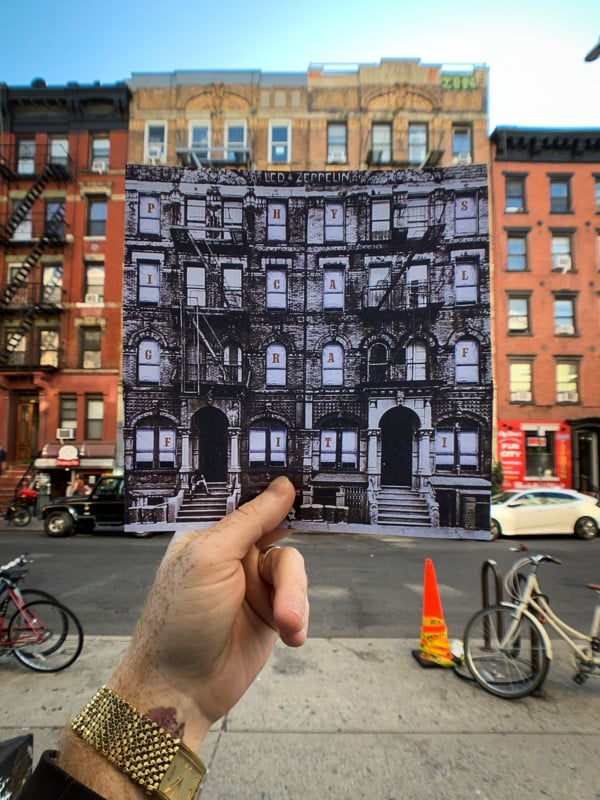
Birnbaum tries to avoid going online and seeing where the spot is as it would take the fun out of it. He likes to challenge himself to scour through interviews, researching the photographers, the timeline of the musicians during certain periods, and other methods. But, at times, he will also comb through Google Maps going street to street, looking for the location and trying to match it up.
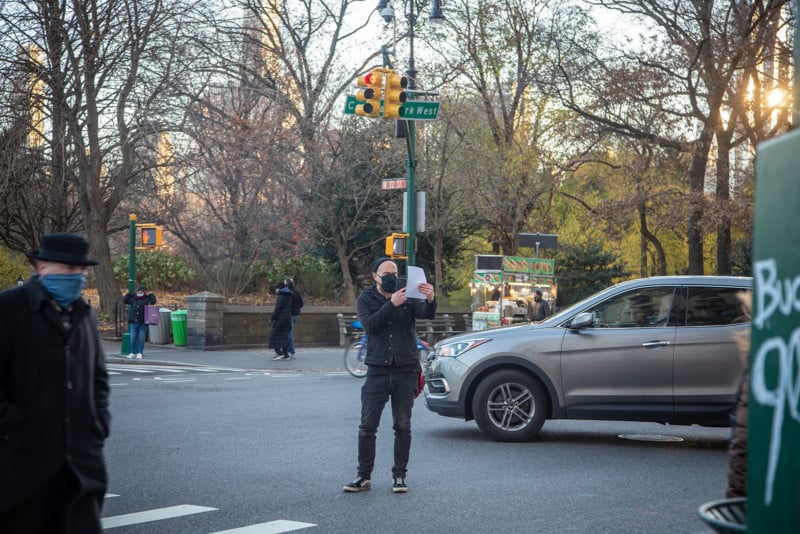
Sometimes there is a series of photographs of the same musician in the same location, but typically each location is unique to the photograph.
“I personally find inspiration from being in the same location that they once stood,” Birnbaum says.
Birnbaum’s favorite photos are from artists who have inspired him the most: Kurt Cobain and Nirvana.
Creating the Composite Image Completely in Camera
“Most of the time, I print out the photo myself [at Staples] from online sources,” explains Birnbaum. “I always print them out before I go to the location. Occasionally, I will use an actual album cover, like Simon and Garfunkel’s Greatest Hits, instead of printing out a photograph.
“They vary in size, everything from 5×7 to 8×10, and I always look for the highest quality image before I print them. If the only image available is low-res or has a watermark across it that impedes the photograph, I won’t use it.”
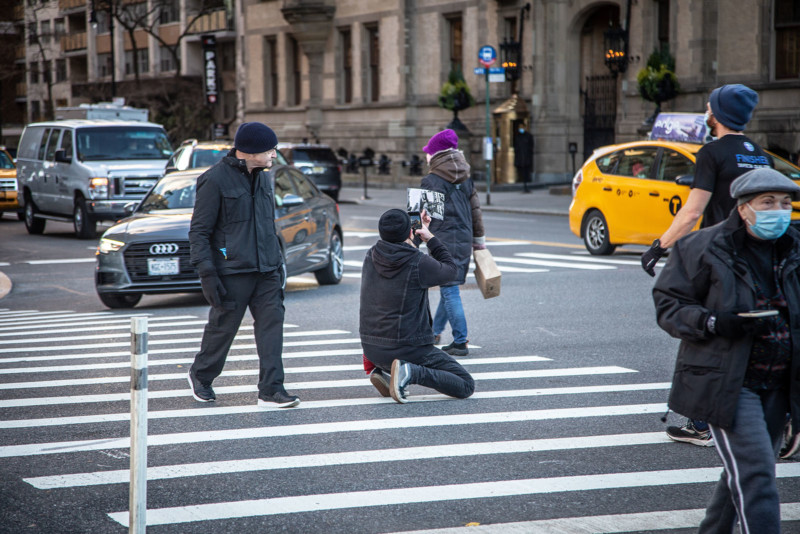
Birnbaum prints out the photo on heavy card stock that is not too thick. He likes having the flexibility to bend and position the photograph a bit if needed to match it up better with the location. This is especially important if the site has changed quite a bit and has new landmarks and objects that he may need to work around.
“There are a lot of things that play into that [whether he holds the photo from the sides or the bottom center],” says Birnbaum as he explains his positioning technique. “Mainly trying to get the best grip to hold the photo steady while lining up the camera and trying not to get hit by a car.
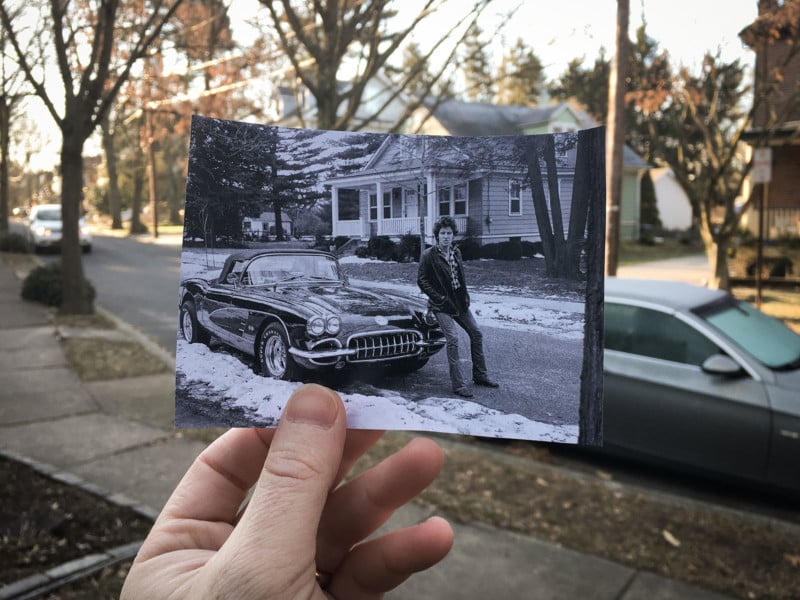
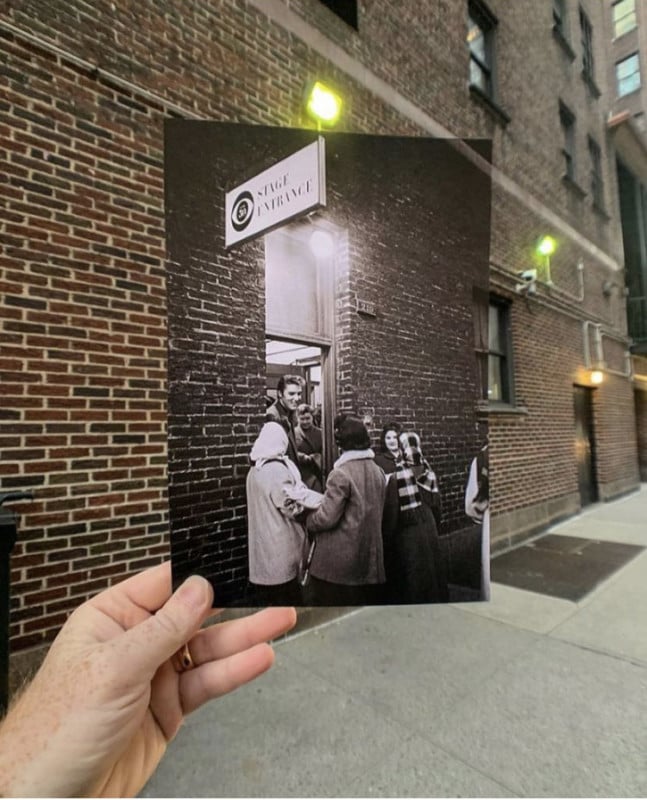
“I think my pictures are most effective when you see me holding the original images in the spots where they were taken, then you look at the blank frame of what the location looks like now.
“I’ve started doing that more recently and it really has an effect on people. Especially the pictures of people who are no longer with us. There’s something beautifully eerie about it. The exact emotion I hope comes across when looking at my pictures.”
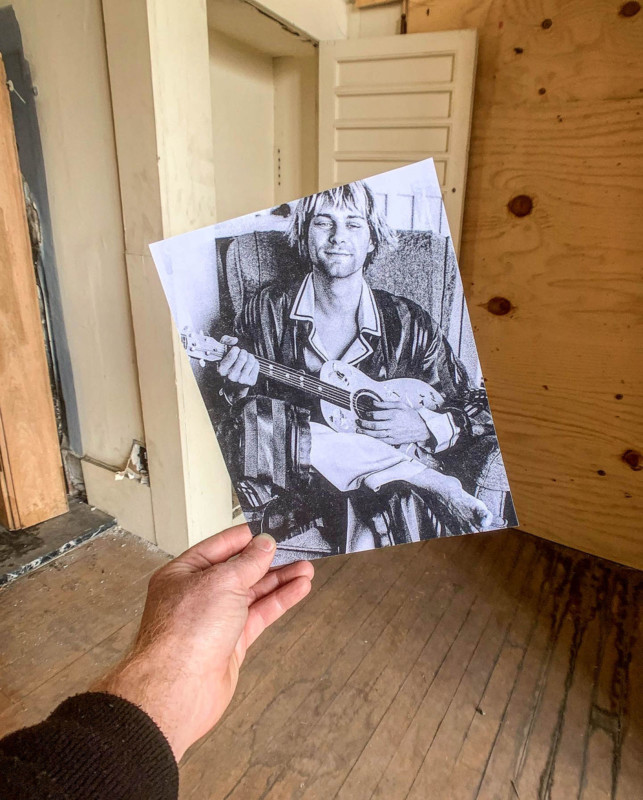
Although the final image is a composite of a picture in a picture, everything must be created in the camera and not in post. There is no digitally moving the photo later on to make it align better.
Birnbaum may make small adjustments to photos inside Instagram, but that’s it — Photoshop or any other editing program is a big no-no to him.
Most of the shoots are done on Sundays as there are few parked cars that Birnbaum has to fight with in the composition.
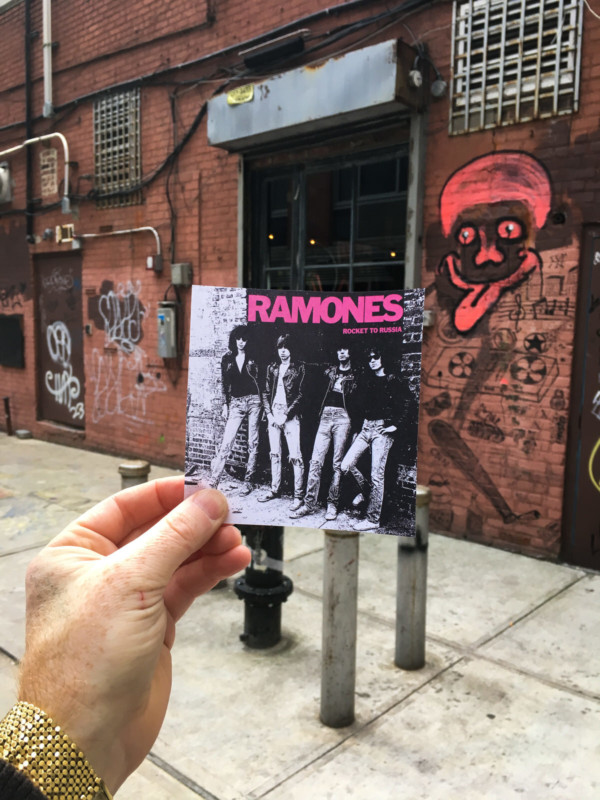
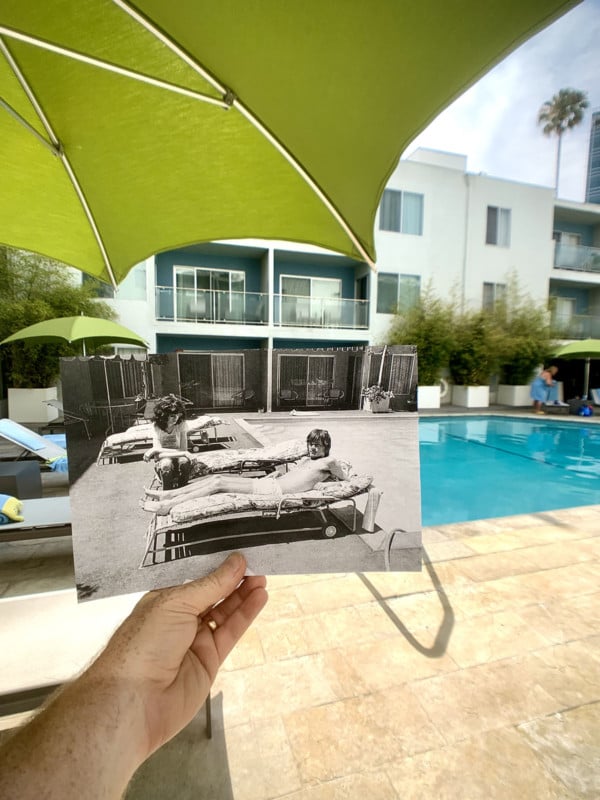
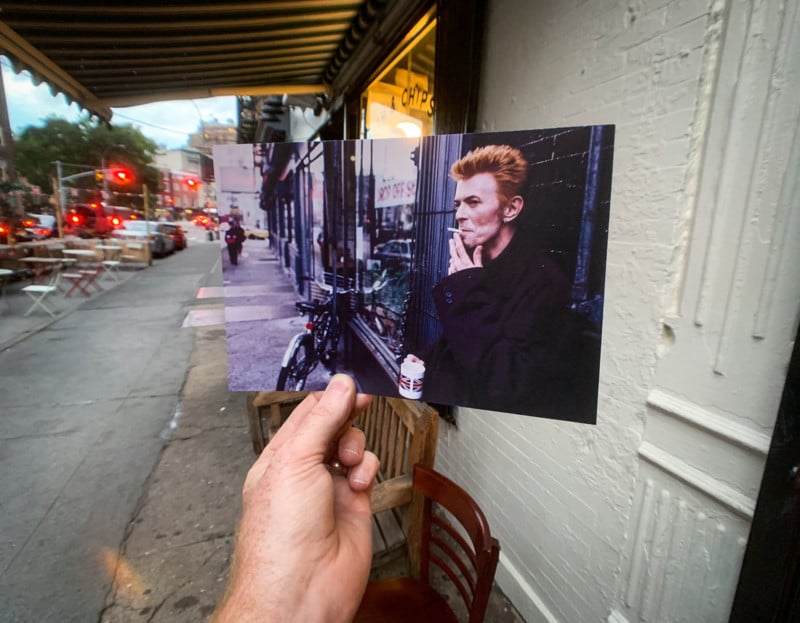
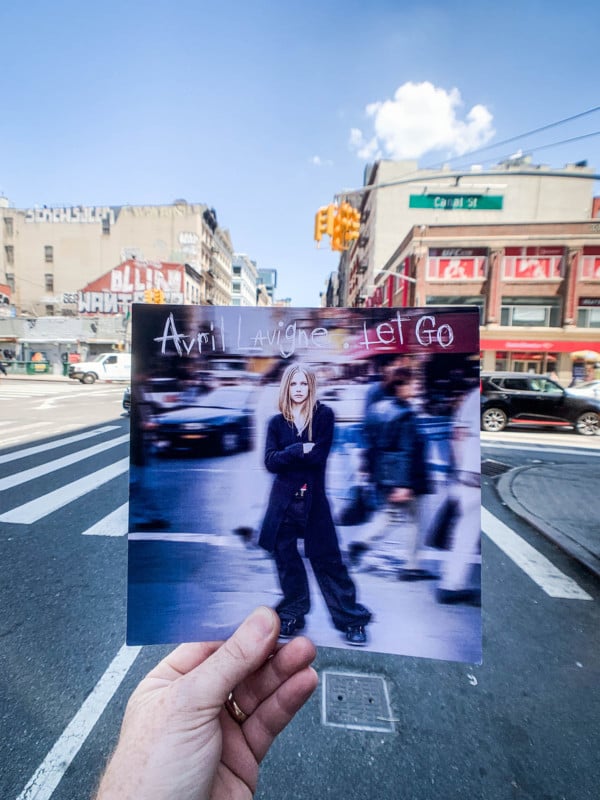
Even if the original photo is shot at night, Birnbaum prefers to shoot it during the day.
“It provides better clarity of the original photograph,” says Birnbaum. “And there’s a nice juxtaposition for the viewer to see what the location looks like now vs. what it looked like when the photograph was originally taken, and daytime is the best way to do that, I find.”
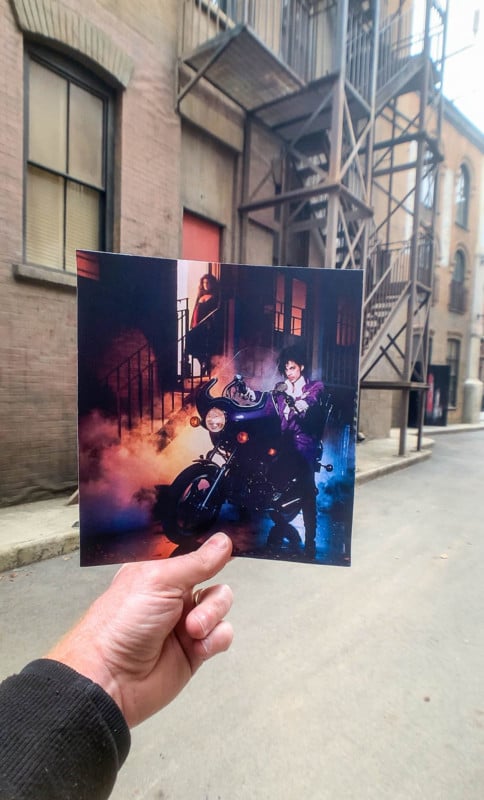
Birnbaum also prefers B&W to color.
“B&W photos work well for what I do,” he explains. “It gives a more historic feel to those images, having often been shot decades ago. As a personal preference, I like black and white photos anyway.”
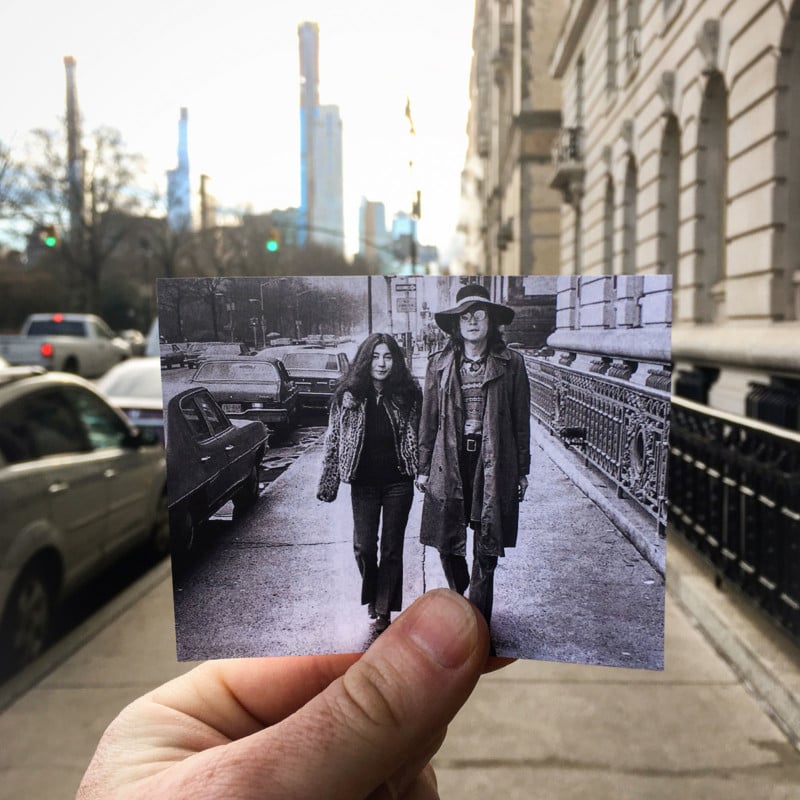
![]()
Connecting with Photographers and Musicians
Birnbaum tags the original photographer when he posts the image to his account @thebandwashere. This has resulted in many memorable relationships with photographers. However, he never contacts them beforehand to ask where the photos were shot.
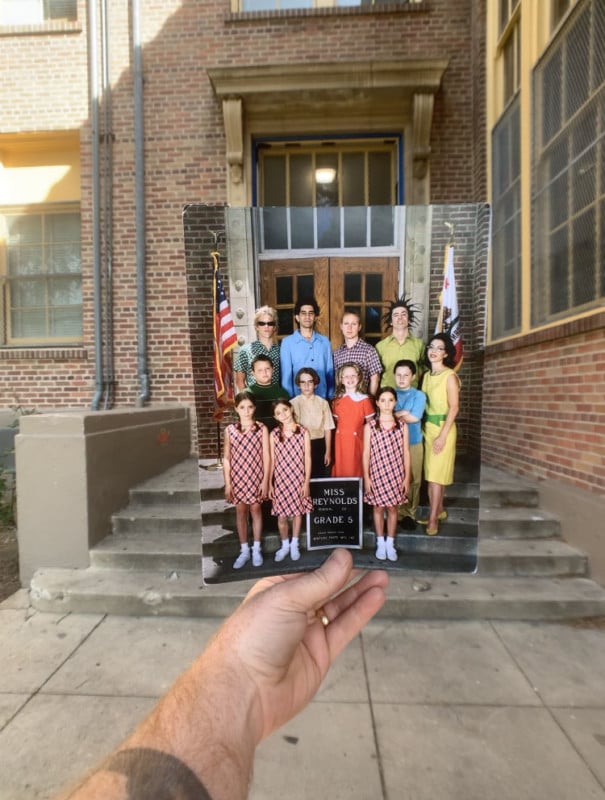
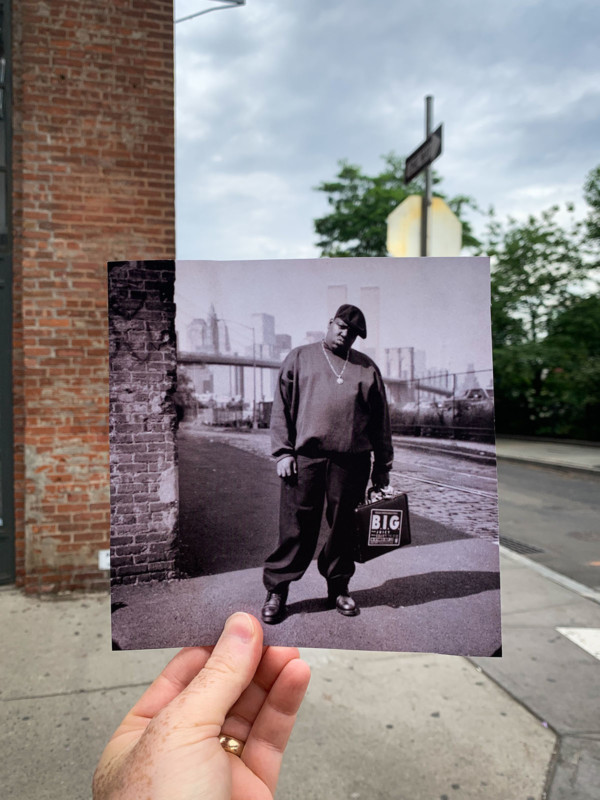
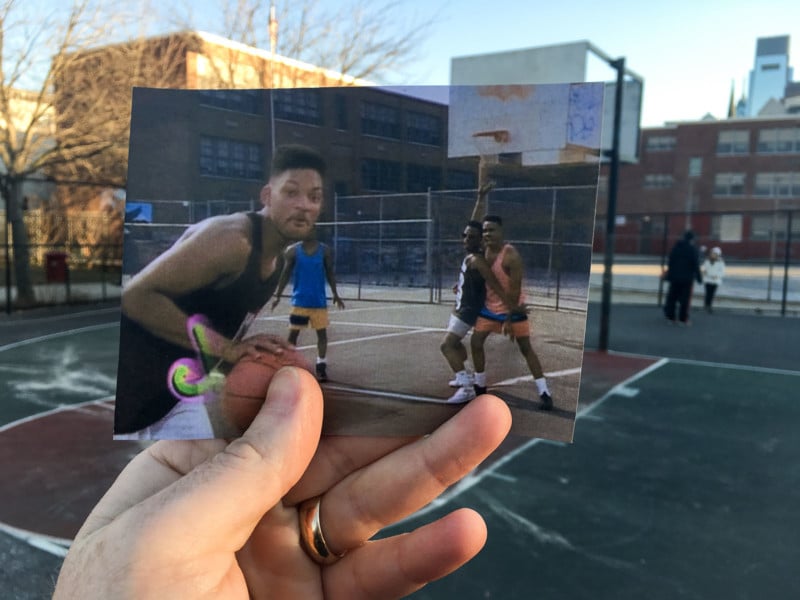
“Justin [Bieber] said he really liked what I was doing and to keep it up and was looking forward to seeing more posts,” mentions Birnbaum proudly.
Christopher Stein, the co-founder, guitarist of the new wave band Blondie and an accomplished photographer, has been “super kind” about what Birnbaum is doing.
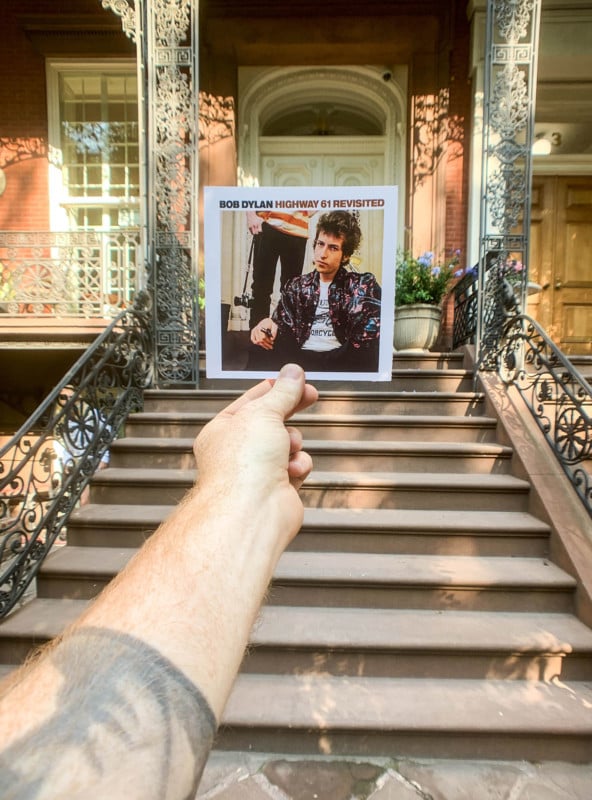
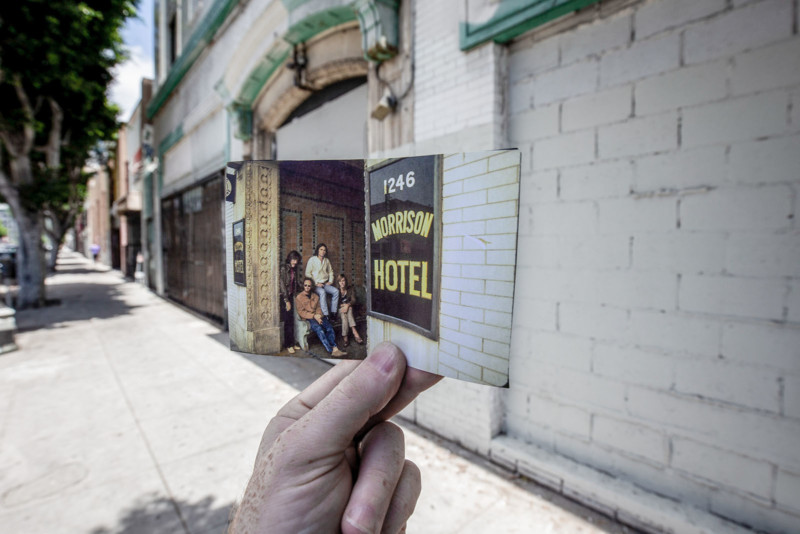
Henry Diltz is a music photographer who has shot more than 250 album covers and thousands of publicity shots in the ’60s and ’70s, including the iconic Morrison Hotel cover for The Doors.
“It’s been amazing to have a connection with him [Diltz] through social media and the images of his I have used,” says Birnbaum. “He’s been so gracious to promote the photographs I have shot and what I do and share them on his page.
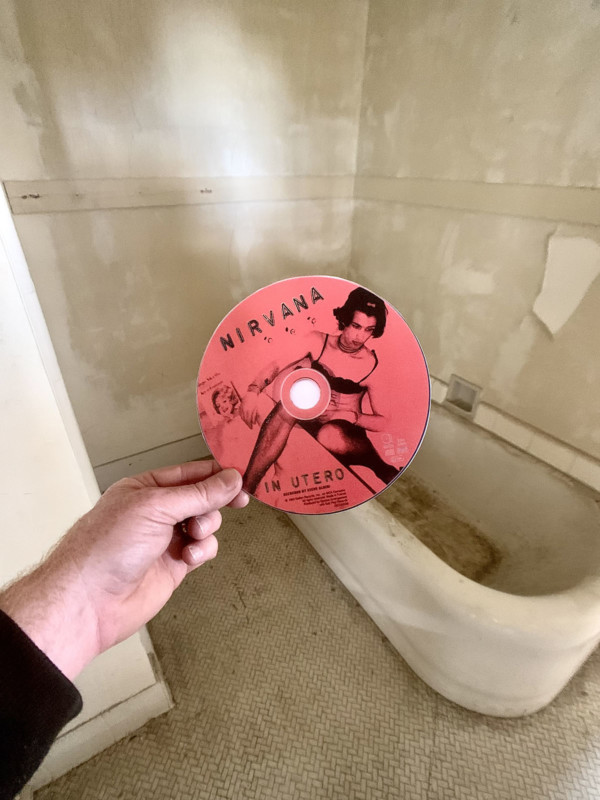
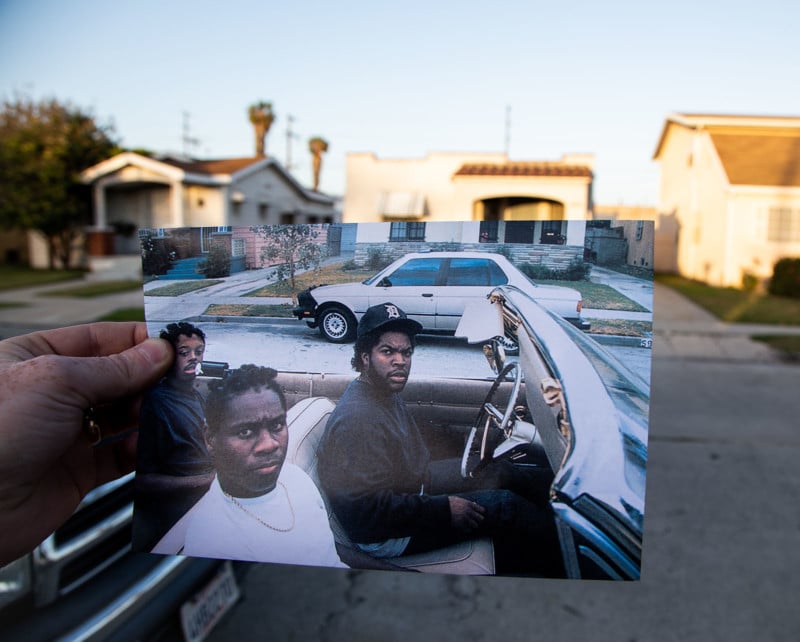
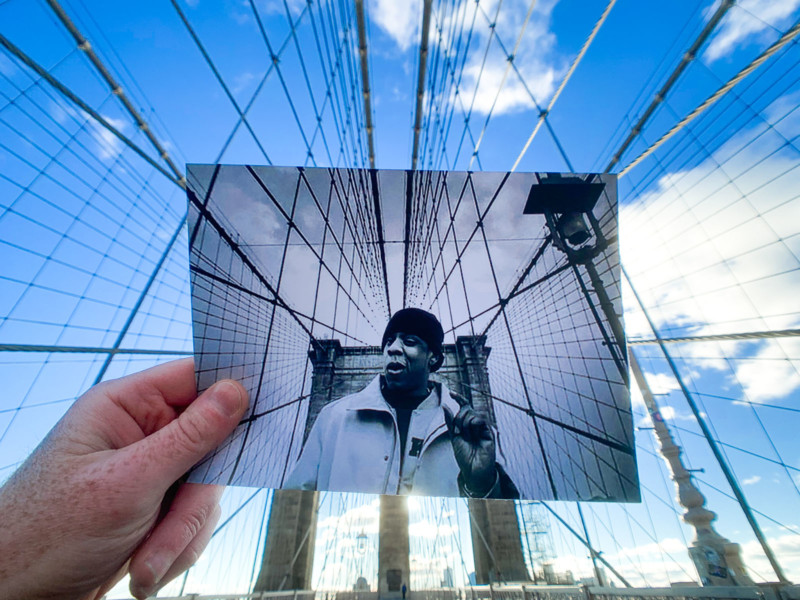
“It’s nice when photographers I look up to respond positively like Henry.”
Other photographers Birnbaum has bonded with are Chris Floyd, Justin Borucki, Sam Erickson, Guido Harari, Tom Sheehan, Dan Winters, and Danny Clinch.
Birnbaum has never received a complaint from any of the photographers he has featured in his project, and many have encouraged him to keep it going.
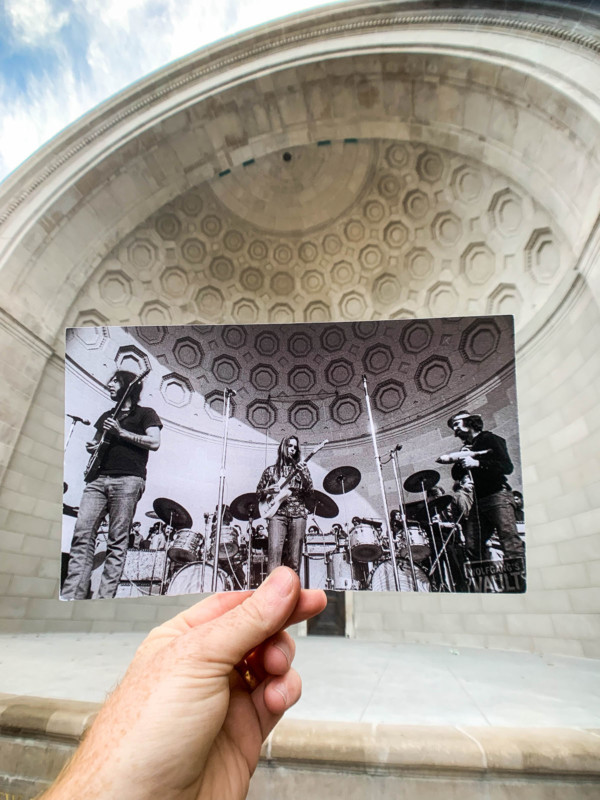
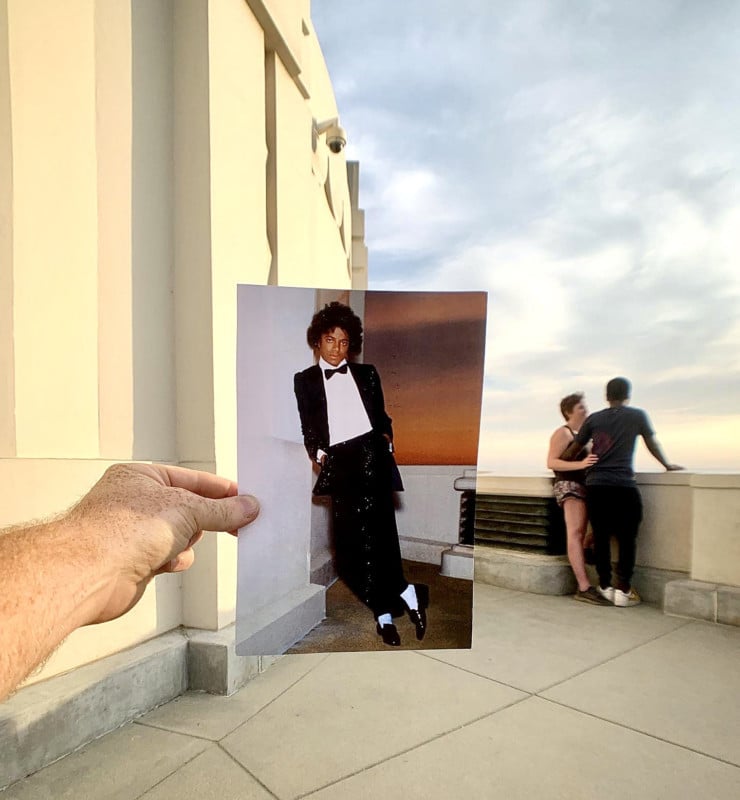
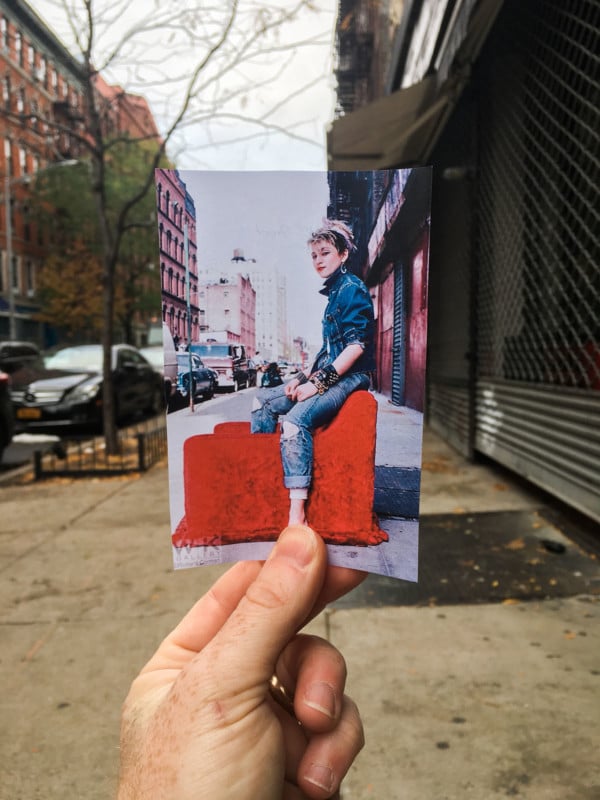
Pro Camera Versus Smartphone
“I started using a Canon 5D Mark IV but found it too cumbersome to hold the photo in my hand and the [large and heavy] camera in the other,” says the music photographer. “So, I switched to an iPhone 11 with a Manfrotto 18mm lens attachment and have used that going forward.
“Using the iPhone also helps me offload the photo quicker and make it more ‘instant’ and accessible to the social platform. Yes, I upload straight from my iPhone to Instagram, but I don’t always post the photo I shot right away when I’m still in the location.
“When I go out to shoot, I tend to shoot a batch of photos over the course of a day [never a quick grab shot], and I post a couple of times of the week… I don’t want to bombard people with too many posts each week. Also, if I know an anniversary, birth, death, album release, or a historical event related to the photograph is coming up, I will hold the post until then.”
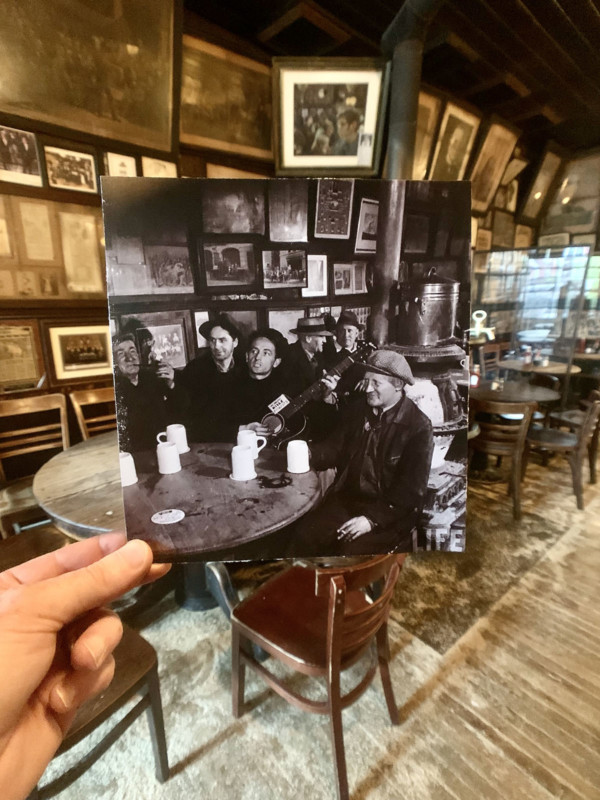
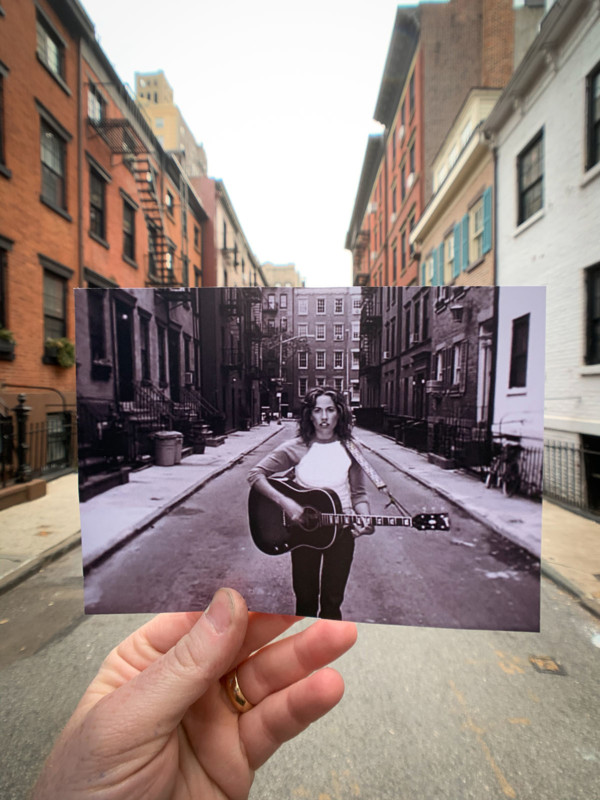
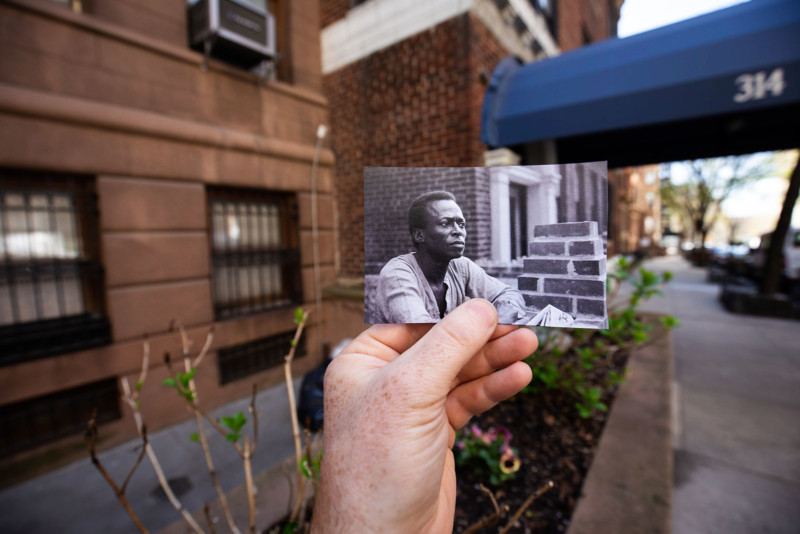
Many people have asked about a potential book, and that is something Birnbaum would love to do in the future, but he is not sure if or when it will happen and what the process would be at this point.
Birnbaum is a professional filmmaker (documentaries, commercials, and music videos) operating outside of Philadelphia and New York City. He has also done still photography, notably the Harley Davidson social and print campaign for their electric bike and Hellmann’s Real Mayonnaise.
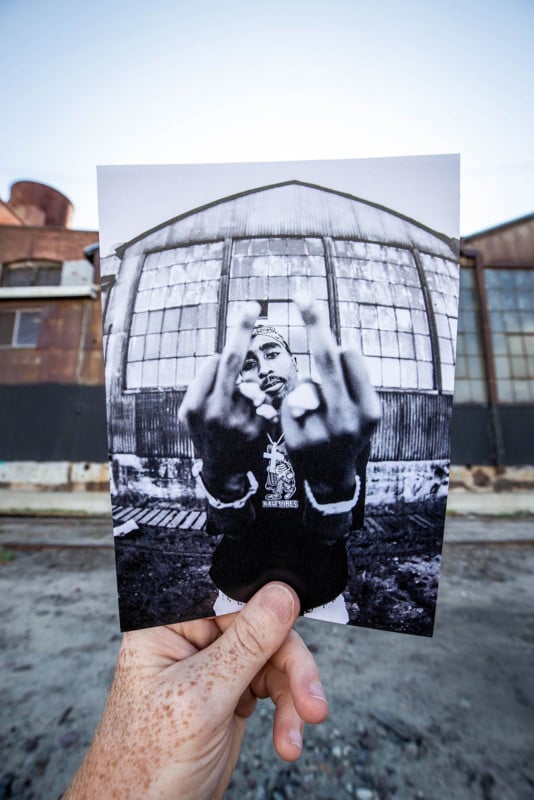
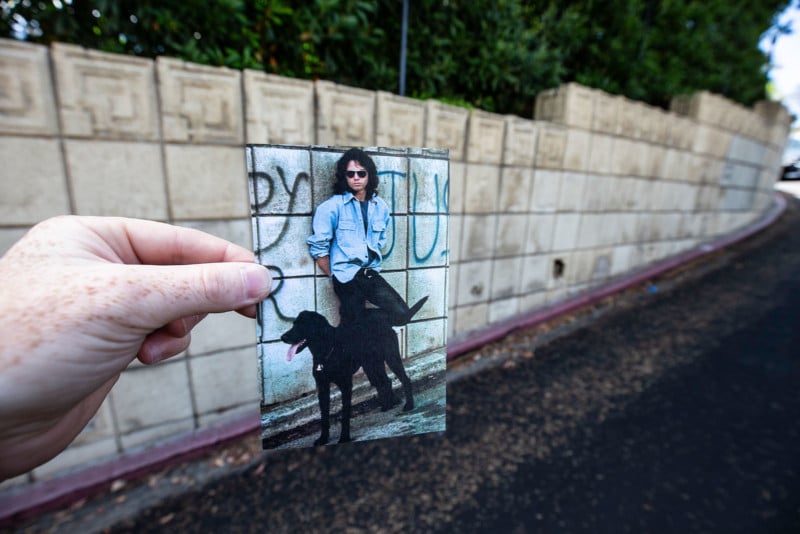
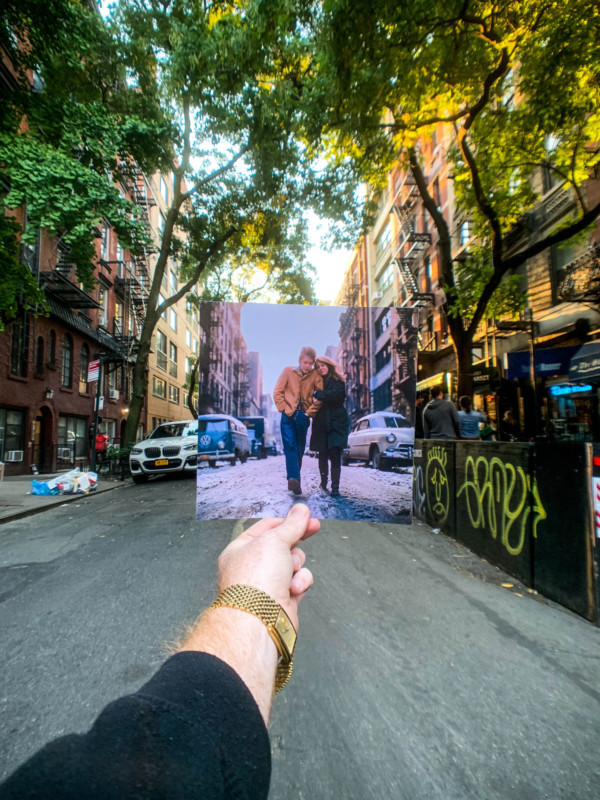
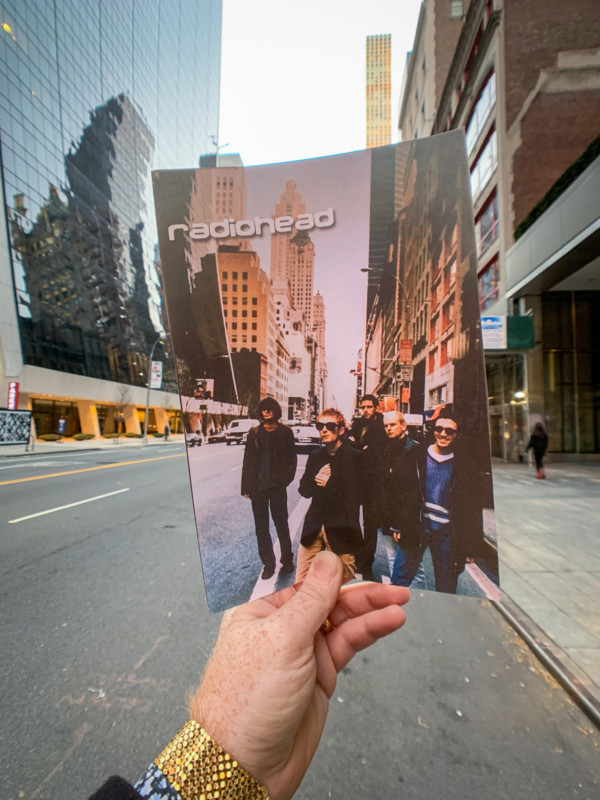
“Part of my passion for this project is to share with people a wide range of music, some they may not be familiar with until they see my post,” says Birnbaum. “I hope to share my wide range of musical tastes as well.
“The other important thing to me is to highlight these amazing photographers who have inspired me in my career. Hopefully, it will open their work to a new audience and will help cement their amazing photographs as important to music and cultural history.”
“The response has been really positive. It’s a way to stay creative while working on bigger projects in my career that take longer, and I have a list of places I’d love to travel to outside of NYC and LA [Washington DC recently, with hope for Japan and England in the future] where most of my photos have been shot. So, I plan to keep it up as long as all those align.”
About the author: Phil Mistry is a photographer and teacher based in Atlanta, GA. He started one of the first digital camera classes in New York City at The International Center of Photography in the 90s. He was the director and teacher for Sony/Popular Photography magazine’s Digital Days Workshops. You can reach him here.
Image credits: All photos by Steve Birnbaum







